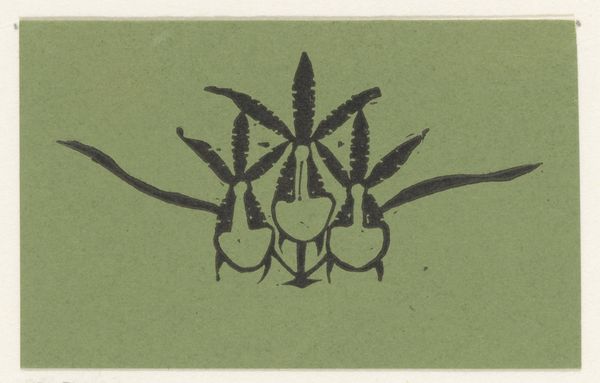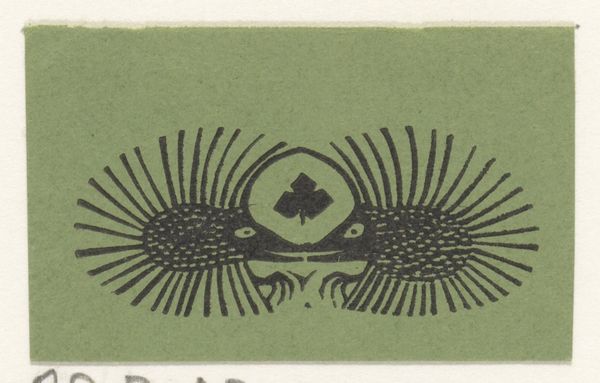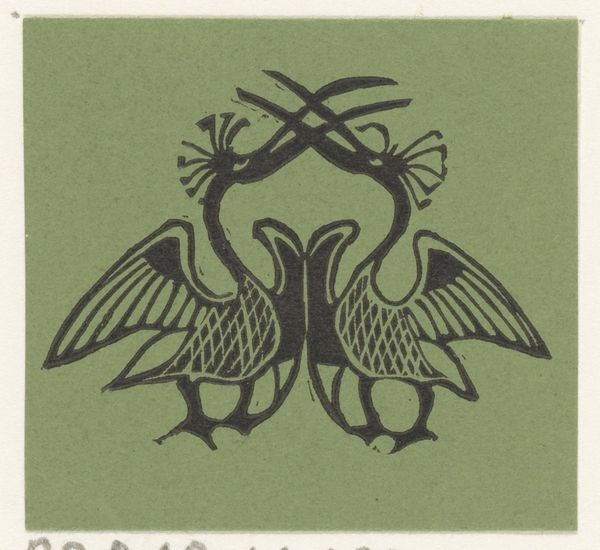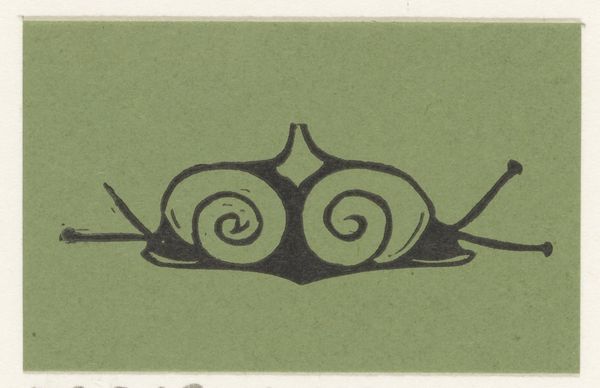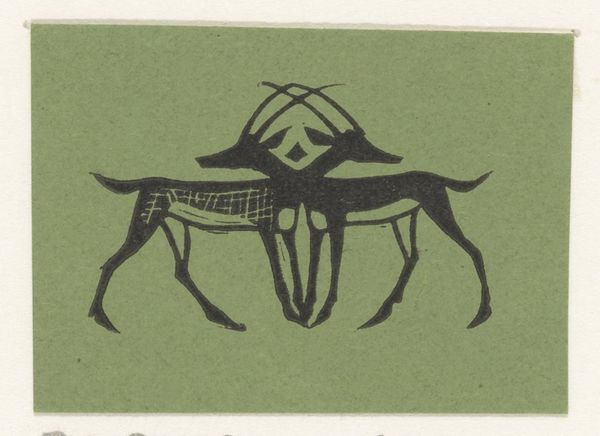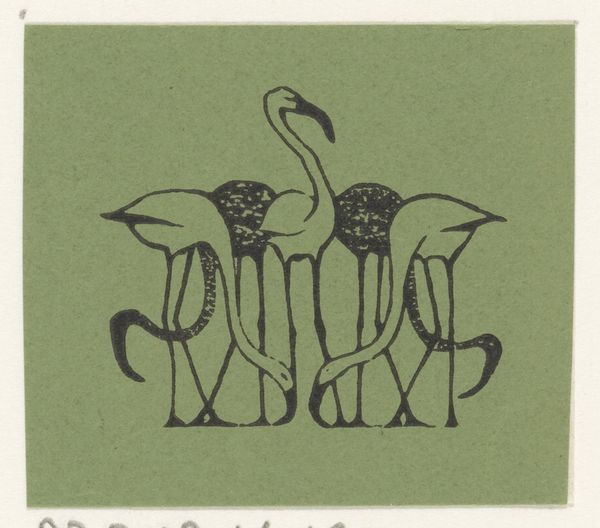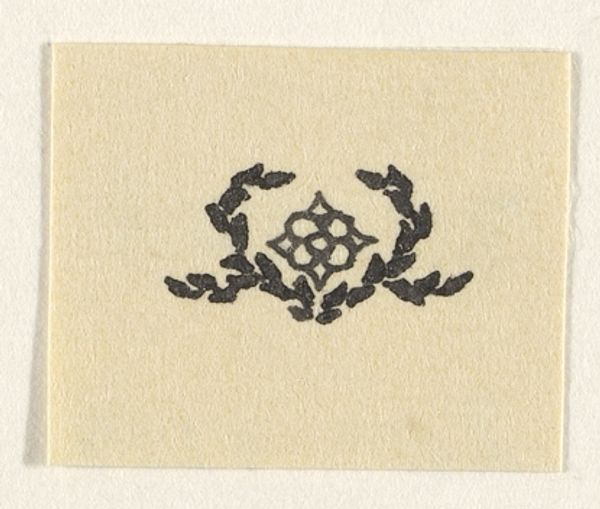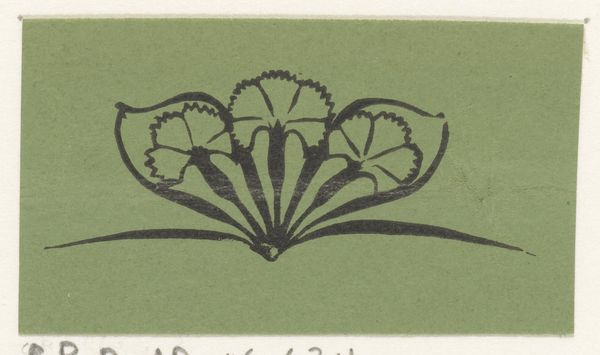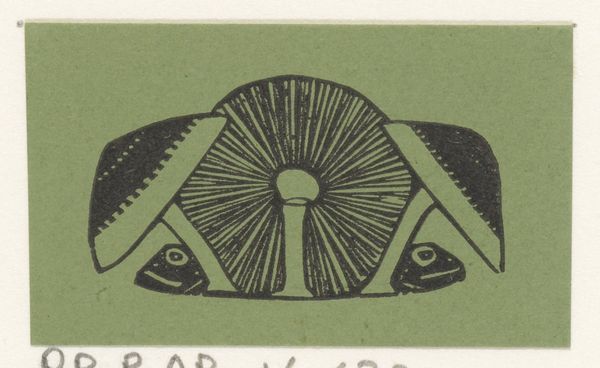
graphic-art, print, woodcut
#
graphic-art
#
art-nouveau
#
blue ink drawing
# print
#
form
#
woodcut
#
line
#
symbolism
Dimensions: height 45 mm, width 63 mm
Copyright: Rijks Museum: Open Domain
Curator: Upon viewing this woodcut, my initial reaction is its surprising delicacy given the graphic nature of the medium. The dark ink creates a lovely contrast against the light background. Editor: This is Gerrit Willem Dijsselhof's "Vignet met orchidee", created around 1892. Dijsselhof was a prominent figure in the Dutch Art Nouveau movement. It's a compelling example of how art nouveau appropriated botanical forms to symbolize, for instance, female sexuality or other forms of symbolic representation of natural forces. Curator: Absolutely. There’s something almost architecturally rigorous about the flower’s symmetrical composition. The interplay of positive and negative space directs the eye toward the orchid's intricate detailing. Do you think that rigid geometry intentionally limits associations to more decadent symbolism? Editor: Not necessarily. The orchid itself was charged with meaning during this period, frequently deployed to convey messages of desire and sensuality that might challenge the rising tides of Victorian and fin-de-siecle moral anxieties. The art world became something of a testing ground. Dijsselhof was actively concerned with pushing conventional boundaries through imagery and design, participating in numerous exhibitions. Curator: It’s interesting that you mention the exhibition context. Looking at it today, one might easily miss how rebellious and new this floral design might have been. What I appreciate in particular is the starkness and contrast: no shading, minimal nuance in the shapes themselves, allowing the subject matter and cultural context to carry most of the symbolic weight. Editor: It reflects the changing tastes and demands of Dijsselhof's clientele as well. Many artists in this era were experimenting with decorative arts as ways to generate revenue and promote reformist aesthetic ideals, such as through bookplates like this vignet. The woodcut allows for relatively inexpensive production and widespread distribution. Curator: Indeed, by simplifying the rendering of the natural form, he both modernizes and democratizes it. He creates something new while engaging with traditions. Editor: It certainly shows us how an artist like Dijsselhof, operating in that very specific time and place, navigated societal norms by embedding these charged botanical symbols into everyday imagery. Curator: It serves as a great reminder to consider both the intrinsic beauty and the embedded meanings when experiencing this piece, which feels so starkly modern, even today.
Comments
No comments
Be the first to comment and join the conversation on the ultimate creative platform.
